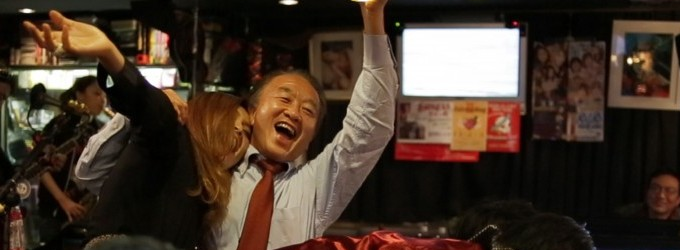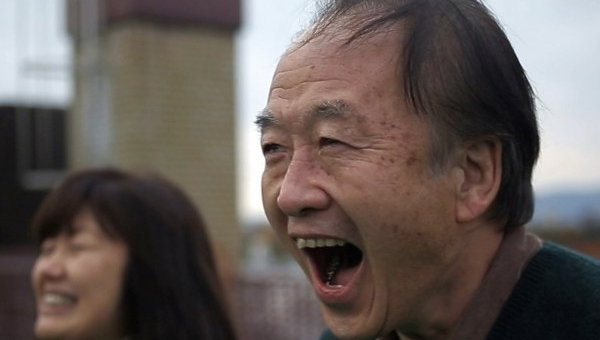 Directorial duo Çağla Zencirci and Guillaume Giovanetti are veterans of the short form, but NINGEN is only their second feature-length offering. It shares with their first feature, NOOR, a semi-realist approach in which real people are cast as themselves but play their parts in the stories Zencirici and Giovanetti write for them. The process recalls the productive feedback loop between fact and fiction found also in a film such as Michael Winterbottom’s In This World. But NINGEN has no aspirations to be documentary of any sort, immersing itself instead in the fictional world of Japanese folktales.
Directorial duo Çağla Zencirci and Guillaume Giovanetti are veterans of the short form, but NINGEN is only their second feature-length offering. It shares with their first feature, NOOR, a semi-realist approach in which real people are cast as themselves but play their parts in the stories Zencirici and Giovanetti write for them. The process recalls the productive feedback loop between fact and fiction found also in a film such as Michael Winterbottom’s In This World. But NINGEN has no aspirations to be documentary of any sort, immersing itself instead in the fictional world of Japanese folktales.
The film opens with a voice-over telling us the story of the Fox and the Raccoon, notorious shape shifters of Japanese mythology, who enter into a bet. Having seen a man burying a bag of gold, they deduce that he must have more. So they wager to both become human, and stay that way, until one of them succeeds in persuading the man to hand over the rest of his fortune. But time moves on, and the man proves difficult to persuade. Cue the start of the action in which we meet an ageing company director driven to mental instability by his financial troubles and the burden of responsibility for his employees and their families. But who exactly is he? We know that the Raccoon becomes a man, the Fox a woman, but is the company director the Raccoon, or the Human (‘ningen’ meaning ‘human’ in Japanese) that is their mark?
NINGEN has no aspirations to be documentary of any sort, immersing itself instead in the fictional world of Japanese folktales.
Our doubt about this is a characteristic effect of the film, which provides the audience with always more unanswered questions than answered ones. In fact, the film is a reflection on the ambiguity of storytelling – not the simple, linear, Western kind of storytelling that Hollywood still adheres to, with a beginning, logical cause-and-effect middle, and an end that wraps everything up. NINGEN is interested in a different type of storytelling, where it is the journey, not the end, that matters most. The film is concerned with the uncertainty of stories, in how we make them up as we go along (about both others and ourselves), and how we are both led and misled by them. At the centre of the film we meet two patients of a mental clinic who are writing and illustrating a story about the Raccoon and the Fox. In a tradition as old in the West as the play within the play in Shakespeare’s HAMLET, they mirror back to us the action of the story of which they are a part. ‘The Raccoon turns into a company president’, they confirm for us. And the Fox? ‘Well, I haven’t decided yet. Maybe a Samba dancer?…Or she can play the shamisen?’, as we already know the company director’s wife does. ‘Which is best?’ they wonder. They are very clearly engaged in the construction of their story, but the ‘finished’ cut of the film manages to retain this sense of a story still, possibly always, in process.
The film is concerned with the uncertainty of stories, in how we make them up as we go along, and how we are both led and misled by them.
Some viewers will find the film’s open-endedness frustrating, others will delight in a type of storytelling so refreshing in its refusal to be defined by simple morals, neat endings and tied up plots. But no viewer will be able to deny that this is a visually stunning film, which loves its locations and mise-en-scène as much as its characters, from the tranquil forest of the opening to the bright lights of the stripper bar, from the quiet calm of the shrine to the kitsch of the fantastic underworld. NINGEN may demand a certain attention and generosity from its audience, but it is certainly worth the bet.
NINGEN screens again on 31st Aug at 16.00 at the Cambridge Film Festival.
httpvh://www.youtube.com/watch?v=6szEuzzVTcs

